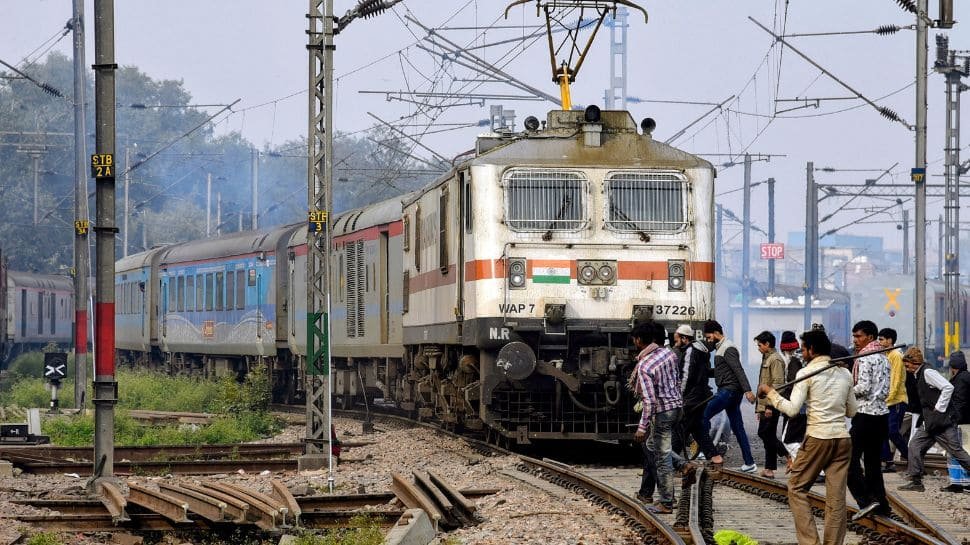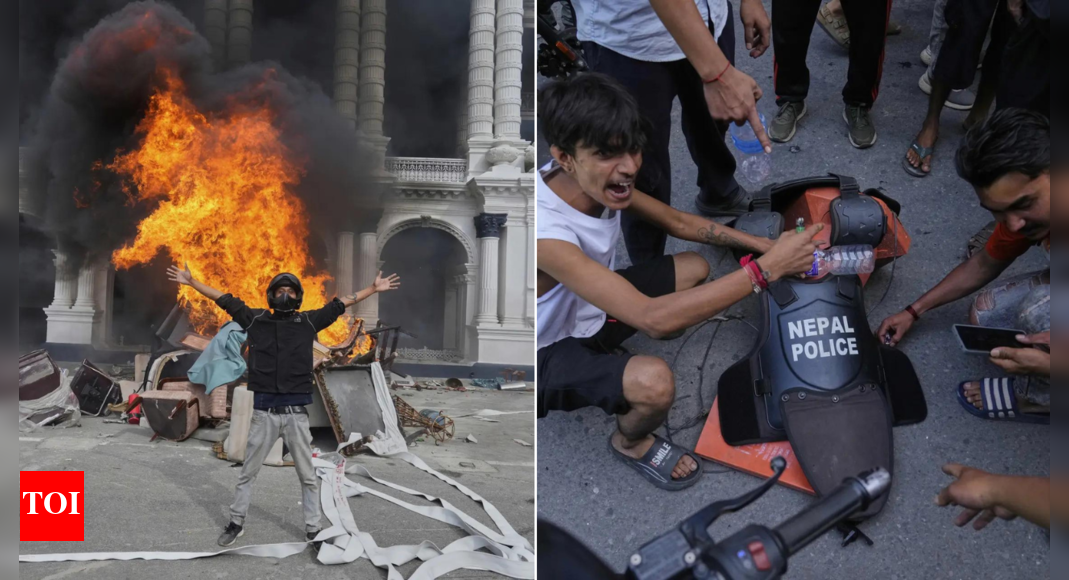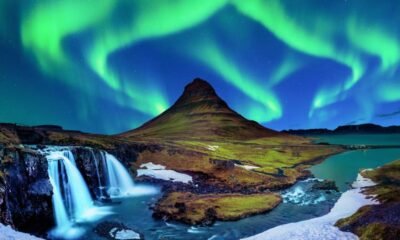Travel Guides & Articles
New Zealand Attracting India New-Age Travelers with its Authentic Experiences, Now Moving Beyond Instagram Filters to Showcase The Raw Beauty and Their Cultural Depth

Monday, July 14, 2025
Travel outbound market of India experienced unprecedented growth owing to significant changes in the economy as well as shifts in traveler attitudes. Recent surveys suggest that over 15 million Indians made international journeys in the first six months of the year 2024 alone, achieving a spectacular growth of 14% vis-à-vis the preceding years. The trajectory points to India becoming the world’s fifth-largest market for outbound travel in the year 2027, amounting to a humongous value of USD 89 billion.
Tourism New Zealand Respsonds through #BeyondTheFilter Campaign
Notably, we observe a significant trend among Indian travelers choosing to make multiple overseas trips each year. Such travelers, in growth of 32%, credit their frequency in traveling to their growing disposable incomes as well as an appetite for experiential and authentic global explorations rather than simple sightseeing.
Observing this emergent market, Tourism New Zealand recently introduced the new revolutionary #BeyondTheFilter campaign targeting Indian tourists in search of authenticity and richer cultural experience. The campaign stars popular real-life couple Rajkummar Rao and Patralekhaa, both known for their natural, down-earth personalities and natural on-screen presence.
The campaign intentionally moves on from highly polished travel photography, showcasing Aotearoa New Zealand through raw, sincere moments in lieu of a manicured social media viewpoint.
Behind the Scenes: Local Authenticity Through an Indigenous Eye
Tourism New Zealand partnered with Indian production house Walkabout Films, in creative leadership with Navzar Irani. Irani emphasized the aim behind the campaign, stating, “The brief was to break free from photo-perfect moments of travel and explore what travel feels like when not selfie-ready for likes or comments.” Captured after an exhaustive seven-day sojourn, the campaign celebrates raw, impromptu moments of connection that resonate in the modern-day traveler.
Digital Mastery: Online Emotional Storytelling
To be on digital, like YouTube and social media, as the main objective, the campaign takes advantage of the familiarity and accessibility of celebrity personalities in reaching out effectively to all types of audiences. As suggested by Gregg Wafelbakker, Regional Director, Asia, Tourism New Zealand, the campaign’s digital-first mindset is aligned with today’s consumer consumption behaviors in the media. The strategy ensures effective storytelling on an emotional basis, which will resonate on a very personal basis with potential visitors.
Shifting Travel Patterns: Experiential Travel Gaining Grounds
Long popular among Indian adventurers for action-based activities like rafting and bungee jumping, New Zealand today is witnessing a market transition toward further immersive, less rushed, experience-based explorations. Indian tourists are spending increased amounts of time interacting intimately with activity and local culture, showing a need for further cultural engagement.
It emphasizes a general global effort toward conscious travel, where tourists appreciate relationships both culturally and emotionally, benefiting visited areas in a positive way.
Recovery and Development: India as a Potential Market for New Zealand
India is quickly becoming New Zealand’s fastest growing and quickest recovering pandemic market. Total arrivals from India are now 22% ahead of pre-pandemic levels, making India the fifth largest market for New Zealand, ahead of several European markets.
This strong rebound highlights India’s significance in the world travel arena, and New Zealand is all too aware of the potential offered by this growth market.
Patterns in Bookings and Diverse Demographic Appeal
Close to 85% of Indian visitors to New Zealand continue to book through either traditional travel agencies or web-based companies like MakeMyTrip. Notably, traditional agencies are becoming much more active in the utilization of electronic media in keeping with today’s consumer expectations. Tourism New Zealand is actively involving these partners in an effort to co-construct content and itinerary ideas which most directly speak to Indian tourists.
Demographic diversity in Indian tourists ranging from families, honeymoon couples, individual tourists, and couples points to the wide appeal of New Zealand. With each category ranging from adventure lovers, couples for romance, and spas for wellness, the country is able to provide bespoke experiences.
Strategic Seasonality: Leveraging Your Tour
Interestingly, the tourist off-peak times within New Zealand (autumn and spring seasons) are also well aligned for peak times for tourists from India, i.e., April, May, and October. The seasonal match positively benefits tourists seeking less crowded tours alongside local businesses for stable all-year-round tourism.
Cultural Resonance and Sustainability in Tourism Projects
The Recognizing an international movement toward high-value, conscientious travel, New Zealand is straightforward in its emphasis on sustainable travel practices and higher levels of cultural understanding. Immersive travel that enables tourists to make a beneficial effect on visited communities was highlighted as a significant area by Gregg Wafelbakker. This facilitates higher levels of authenticity and deeper emotions in their journeys.
Looking ahead: Capitalising on India’s Travel Boom
As India’s outbound market is expected to boom in the years to come, New Zealand is committed to keeping and gaining market share. Ongoing investment and strategy aimed at capturing such growth, keeping New Zealand attractive to shifting Indian traveler demand, was emphasized by Gregg Wafelbakker. In short, while India’s travel dynamics keep altering at a frantic pace, international destinations, particularly New Zealand, refine their products to meet and exceed the expectations of this powerful market. With authentic, heart-moving travel experiences, upgraded electronic communication, and sensitively conscious campaigns, India’s rising craving for travel is bound to pay rich dividends to New Zealand.
Travel Guides & Articles
India exploring ways to host sanctioned Taliban leader despite UN ban

India will continue to look at ways to work with the Taliban, including hosting its UN sanctioned leader Amir Khan Muttaqi in New Delhi, officials said.
Amir Khan Muttaqi, the Taliban’s acting foreign minister, was due to make his first trip to India in August but failed to secure a waiver on his existing travel ban by the United Nations Security Council.
He was sanctioned by the UNSC in 2001 over the acts and activities of the Taliban in Afghanistan during the hardline Islamist group’s previous rule in the 1990s.
On being asked about Muttaqi’s planned visit to India, Indian foreign ministry spokesperson Randhir Singh Jaiswal told reporters that India continues to engage with Afghan authorities.
“As you are aware, we have longstanding ties with the people of Afghanistan. India continues to support the aspirations and developmental needs of the Afghan people. We continue to have engagements with Afghan authorities,” he said last week.
According to officials in New Delhi, a waiver for Muttaqi was sought from the UNSC but it was not given clearance, in a move reportedly blocked by Pakistan.
The 1988 sanctions committee – a subsidiary body of the Security Council to oversee the implementation of sanctions – is currently led by Pakistan. It is overseeing the travel bans imposed on the Taliban leaders along with assets freeze and an arms embargo.
The Indian side will continue to look into ways to host the acting foreign minister and the visit is expected to proceed in the coming months after the waiver on the travel ban is addressed in the interest of regional cooperation, sources told The Independent.
If the waiver is granted, the visit from Muttaqi will bump India into a brief list of nations that have hosted the sanctioned Taliban leader – joining the ranks of China and Russia who have engaged with the fundamentalist group despite censure.
The India visit, seen as problematic over the Taliban’s policies banning almost half of its population of girls and women from schools, colleges, and workplaces on top of curtailing their basic human rights, will grant legitimacy to the group’s senior leader.
India has gradually ramped up its cautious yet increasingly diplomatic approach in engaging with the Taliban by meeting with the group’s senior officials in Qatar and also in Kabul.
In January this year India’s foreign secretary Vikram Misri met with Muttaqi and discussed diplomatic relations, security concerns, and humanitarian aid with Afghanistan at its highest-level talks till then in Dubai.
The two sides discussed expanding bilateral ties, with an increased focus on India’s security concerns, boost in trade through the Chabahar Port in Iran, and Indian investments in several development projects inside Afghanistan, which remain a key concern for Delhi.
In May this year, India’s external affairs minister S Jaishankar held a telephonic conversation with Muttaqi where the Afghan leader condemned the terrorist attack in Kashmir’s Pahalgam.
The exchange marked the highest level of contact between New Delhi and Kabul after the exit of Nato forces from Afghanistan in August 2021, even though India has not granted any official recognition to the Taliban.
The two spoke again last week in the aftermath of deadly 6.0 magnitude earthquake in Afghanistan, which killed at least 2,200 people even as authorities warned that the actual death toll could be higher as more bodies in remote areas were recovered.
Travel Guides & Articles
India’s Longest Train Journey Turns Dirtiest: 4,000 Km, 75 Hours Across 9 States And Stinky Travel – Viral video Exposed | News

A viral video by travel vlogger Ujjwal Singh exposed the filth inside the Dibrugarh–Kanyakumari Vivek Express. Covering 4,000 km in 74–75 hours across nine states, the train faces numerous cleanliness complaints, with passengers calling it India’s dirtiest.
Travel Guides & Articles
GenZ Protests Live: MEA urges Indians to defer travel to Nepal, issues advisory

Despite the government lifting the social media ban on Monday evening, protests continued unabated. The unrest, largely driven by college and school students, has been marked by clashes with police, who resorted to firing at multiple locations to disperse the crowds.
Police and local authorities also used water cannons, tear gas, and imposed curfews in parts of Kathmandu, including Kalanki and Baneshwor, as well as in Lalitpur’s Chapagaun-Thecho area. Demonstrators blocked roads by burning tyres and shouted slogans such as “KP Chor, Desh Chhod” and “Take action against corrupt leaders,” voicing frustration over corruption, dwindling economic opportunities, and the recent online blackout.
The Nepal government updated the casualty figures, reporting 18 deaths and 250 injuries during Monday’s protests. In response to the escalating situation, PM Oli called the demonstrations an “unpleasant situation” and blamed the unrest on “ambiguity between the thinking” of the younger generation.
Expressing condolences, he assured that a committee would probe the incident and submit a report within 15 days to recommend measures to prevent similar occurrences.
The protests have also triggered regional security measures. The India-Nepal border has been placed on alert, with the Sashastra Seema Bal (SSB) closely monitoring developments to prevent spillover of violence into Indian territory. Officials clarified that the alert is preventive and the situation remains under control.
The protests follow a government order that blocked 26 social media platforms, including Facebook, Instagram, X (formerly Twitter), YouTube, WhatsApp, LinkedIn, and Reddit, citing non-compliance with local registration requirements. The restrictions, combined with entrenched corruption and governance grievances, have fueled widespread anger among Nepal’s youth, prompting them to demand urgent reforms and accountability from the administration.
As the demonstrations continue, curfews remain in place in several districts, and authorities are bracing for further unrest while coordinating relief and law enforcement efforts to restore order.
-

 Business2 weeks ago
Business2 weeks agoThe Guardian view on Trump and the Fed: independence is no substitute for accountability | Editorial
-
Tools & Platforms4 weeks ago
Building Trust in Military AI Starts with Opening the Black Box – War on the Rocks
-

 Ethics & Policy1 month ago
Ethics & Policy1 month agoSDAIA Supports Saudi Arabia’s Leadership in Shaping Global AI Ethics, Policy, and Research – وكالة الأنباء السعودية
-

 Events & Conferences4 months ago
Events & Conferences4 months agoJourney to 1000 models: Scaling Instagram’s recommendation system
-

 Jobs & Careers2 months ago
Jobs & Careers2 months agoMumbai-based Perplexity Alternative Has 60k+ Users Without Funding
-

 Podcasts & Talks2 months ago
Podcasts & Talks2 months agoHappy 4th of July! 🎆 Made with Veo 3 in Gemini
-

 Education2 months ago
Education2 months agoMacron says UK and France have duty to tackle illegal migration ‘with humanity, solidarity and firmness’ – UK politics live | Politics
-

 Education2 months ago
Education2 months agoVEX Robotics launches AI-powered classroom robotics system
-

 Funding & Business2 months ago
Funding & Business2 months agoKayak and Expedia race to build AI travel agents that turn social posts into itineraries
-

 Podcasts & Talks2 months ago
Podcasts & Talks2 months agoOpenAI 🤝 @teamganassi





















